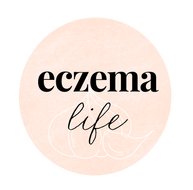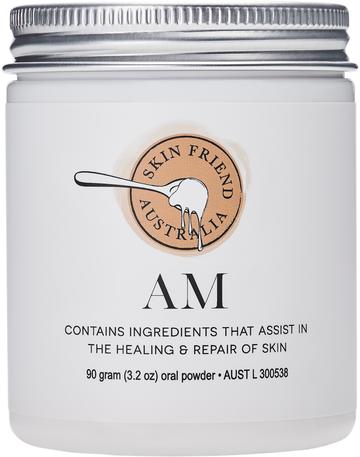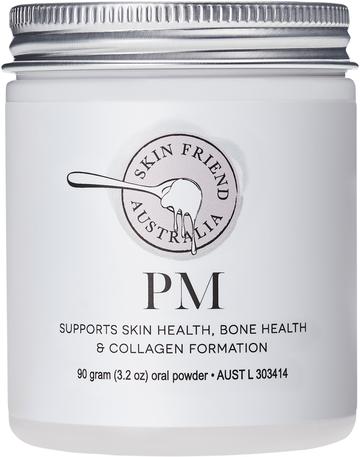How to safely withdrawal from topical steroids
Topical steroid withdrawal (TSW), also known as red skin syndrome, can occur when a person abruptly stops using topical steroids after months of frequent use.
TSW is a controversial term that is not widely recognised in the medical community, but there are scientific papers referring to it as "steroid addiction" or "red skin syndrome". At the end of this article I have some research papers if you would like to do some extra research.
While short-term use of topical steroids can be helpful, long-term use can have side effects with increased frequency and severity, depending on how long you use them.
Note, many years ago used topical steroids on my skin and my child's skin, so I get it, sometimes you need it to get through the night, so no judgement from me here.
This article provides information on how to slowly taper down use of topical steroids for people who wish to stop using topical steroids. It is NOT a recommendation to go off topical steroids or any medications. You should chat with your health professional about this if that is your goal.

Do not stop applying topical steroids just yet...
If you are currently using topical steroids, such as hydrocortisone cream, do not be alarmed and suddenly stop using it, as this may be harmful to your skin and trigger topical steroid withdrawal, also known as TSW or red skin syndrome.
Suddenly stopping can cause adrenal suppression (adrenal crisis) and HPA axis suppression, which can be harmful. So please consult with your doctors before going off topical corticosteroids (TS), and read the following information.
It is best to gradually cut down on TS use, and I’ll explain how to do so shortly.
This advice also applies to topical immunosuppressants as they can be harmful, especially if used long-term. But again, chat with your doctor before changing your dosage and routine.
Why not go cold turkey and stop using the steroids now?
You can stop whenever you prefer. It is ultimately up to you how soon you stop.
However, gradually cutting down on the strength of the TS creams is my recommendation based on research papers on the potential harmful effects of going cold turkey.
I strongly disagree with bloggers and "experts" who recommend you stop using topical steroids suddenly. It is incredibly painful. It's is potentially unsafe, and there is a much better way.
The following is an example of how to cut down on the use of topical steroids.
How to avoid topical steroid withdrawal
Topical steroid manufacturers have known about topical steroid addiction for decades, which is why doctors usually advise "only use them for 7 days then have a couple of days off", and gradually cut down on use rather than stop suddenly.
Suddenly stopping use of topical steroids (after months of applying TS frequently) is sort of like running a marathon with no preparation or practice. You need to gradually get your skin "fit".
When going off topical steroids, especially if you have used them for long periods of time, you absolutely need to train your blood vessels to cope with the crazy chemical changes that are going to occur.
The Anti-TSW Program
Do you see a pattern forming?
Constrict, dilate, constrict, dilate.

It’s like working a muscle where you flex as you lift a weight and then relax. The muscle gets stronger. This is how you train your blood vessels to constrict again after dilating excessively.
While there is no research to support this (yet), ‘exercising’ the blood vessels may speed up recovery from topical steroid addiction. Supplements that reduce nitric oxide levels in the blood can also help to ease the withdrawal process.
These supplements include mecobalamin (vitamin B12) which reduces nitric oxide levels in the body.
According to research, cobalamins and cobinamides, such as Mecobalamin (a methylated type of vitamin B12), could be useful agents for inhibiting Nitric Oxide generation in humans with certain diseases in which NO acts in a deleterious fashion, such as inflammatory diseases and topical steroid withdrawal (Weinberg, 2009, ref). You can find mecobalamin in Skin Friend AM so that might be a good option for you.
Safe topical steroid withdrawal program
Here’s another way to gradually stop using topical steroids if you are currently applying topical steroids daily.
Weeks 1–3: Apply your topical steroids every second day (i.e. have one topical steroid-free day in between applications). For example, apply topical steroids, mixed into a cream such as Eczema Friend, on Monday; do not apply on Tuesday (just use Eczema Friend or Wonder Zinc on this day); and apply diluted topical steroid cream on Wednesday, and so on.
You can add Wonder Zinc to this routine as it is a gentle rash cream that relieves skin rashes. This will speed up your recovery process. You may also like to begin The Eczema Detox Program and/or Skin Friend during this time.
Weeks 4-8: Taper down use again. Mix HALF the amount of topical steroids you used last week, into a skin cream. Apply it once every second day.
Weeks 10 – 12: Get a new TS prescription with a lower dose (optional, or use the same dose). Apply topical steroids (mixed into your favourite skin cream) every third day and have two days in a row where you completely avoid using topical steroids in between applications.
Weeks 13–18: Buy a lower-strength TS product (mix it into your fave skin cream) and apply it every four days. On the other days, just apply your favourite skin cream.
Week 19: If you are ready to, stop using topical steroids.**
**If you find you are still reacting badly when stopping TS products you can opt to go back to the previous step, which involves applying a low strength topical steroid (mixed with moisturiser), and apply it only every fourth day.
You can keep using topical steroids as needed with the aim of stopping after 19 weeks or earlier if your skin gets better.
Patient testimonial

If you would like more information about Topical Steroid Withdrawal read my other TSW posts here >>
Products
Research (read more)
Here is my blog discussing the research >>
See my blog discussing the side-effects here >>
References
- Kligman, A.M. and Frosch, P.J., 1979. Steroid addiction. International Journal of Dermatology, vol.18, no.1, pp.23-31.
- Rathi, S.K. and Kumrah, L., 2011. Topical corticosteroid-induced rosacea-like dermatitis: A clinical study of 110 cases. Indian Journal of Dermatology, Venereology, and Leprology, 77(1), p.42.
- United States National Library of Medicine, Drug Record: Corticosteroids, LiverTox, retrieved from: https://livertox.nih.gov/Corticosteroids.htm
- Weinberg, J.B., Chen, Y., Jiang, N., Beasley, B.E., Salerno, J.C. and Ghosh, D.K., 2009. Inhibition of nitric oxide synthase by cobalamins and cobinamides. Free Radical Biology and Medicine, 46(12), pp.1626-1632.
- Liu, Y., Tonna-DeMasi, M., Park, E., Schuller-Levis, G. and Quinn, M.R., 1998. Taurine chloramine inhibits production of nitric oxide and prostaglandin E2 in activated C6 glioma cells by suppressing inducible nitric oxide synthase and cyclooxygenase-2 expression. Molecular brain research, 59(2), pp.189-195.




